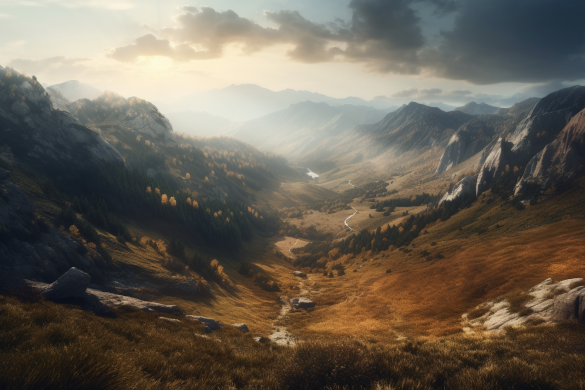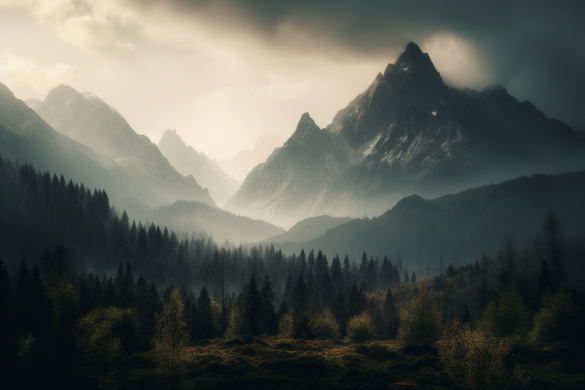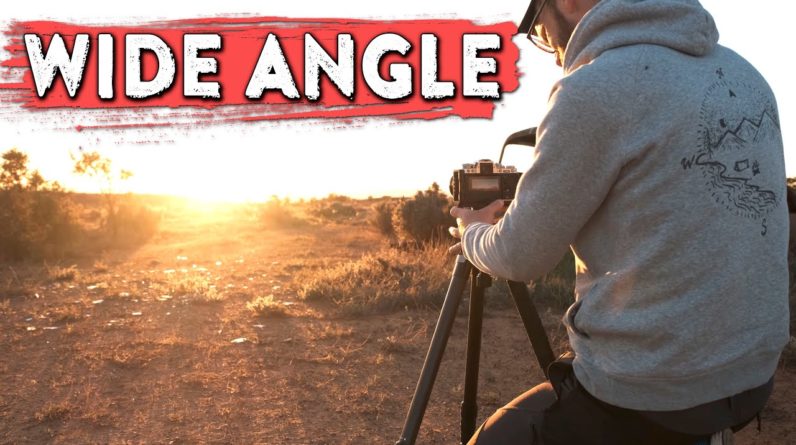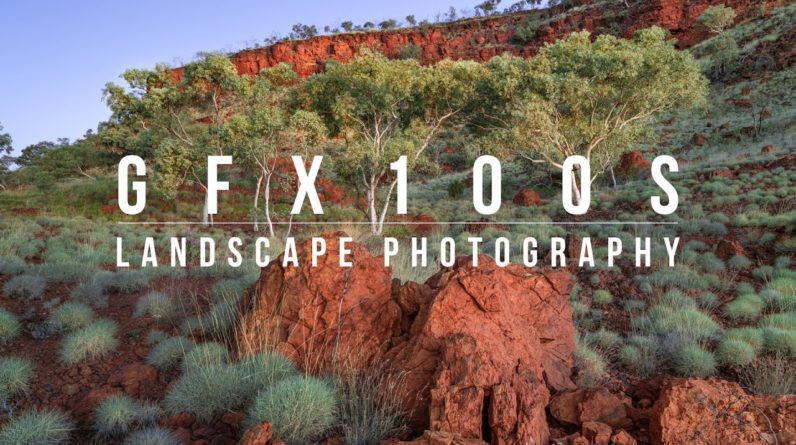On This Page
- What is the Golden Hour?
- When is the Golden Hour?
- Tips for the Golden Hour
- Lighting types during the Golden hour In Photography
- When is golden hour & how to take pictures during it.
- What is golden hour?
- It’s all about the light.
- Tips for golden hour photography.
- Do more with Adobe Photoshop Lightroom.
- What is Golden Hour? Tips to Use it In Your Photography
- What Time is Golden Hour?
- What Is So Special about Golden Hour?
- Is the Golden Hour Every day?
- Golden Hour vs. Blue Hour
What Is The Golden Hour In Photography? – Photographers nearly universally agree that the greatest time of day to snap images is during the golden hours. Learn more about these lovely times of day to capture a glow in your photos. Sunrise was captured around 7:14 a.m. The golden hour is the hour before and after sunset, the first and last hours of sunshine in the day.
The term “golden hour” refers to a period of time when a photographer has the most opportunities. To be more exact, it is the time of day just after dawn or before dusk. The light is redder and softer at this time of day than when the sun is higher in the sky. Photographers refer to this time period as “magical hour” because of the wonderful light it provides for taking amazing photographs. The brightness of the sky matches the brightness of the backdrop streetlights, signage, automobile headlights, and lighted windows at this hour. It only lasts around twenty to thirty minutes.
When is the Golden Hour?
Professional photographers seek for the last hour before sunset and the first hour after daybreak. These hours, known as “the golden hour” or “magic hour,” give the ideal light for taking spectacular photographs. Every photographer may benefit from learning how to use the golden hour.
This important period of the day is well recognised for providing artists with some of the most pleasing natural light to work with when creating gorgeous sunset photos. Here are some of the greatest methods to take advantage of Mother Nature’s golden hour for those who wish to make the most of it:
Tips That Answer What Is The Golden Hour In Photography
Photographers employ not only professional methods and weather circumstances, but also a precise time of day while shooting to completely convey artistic goals in the image. Lighting is the single most important component in determining whether or not a photograph will succeed. You can capture the most magnificent landscape or attractive model, but without high-quality lighting, your images will be flat, lifeless, and expressionless. This is especially true when filming outside, when artificial lighting is difficult or impossible to utilise. In this instance, you will be entirely reliant on natural light. These temporal periods are elegantly named: a blue hour, a golden hour, or an emerald minute.
Here are some pointers to help you make the most of golden hour shooting: Prepare ahead of time. Determine your white balance. For portraiture, use a large aperture. Make use of spot metering. Lighting in the front. Backlighting. Lighting at the rim/edge. Flare.
Here are some golden-hour photography strategies to help you achieve the greatest outcomes and produce amazing images.
In the realm of golden hour photography, the possibilities are endless. Isn’t it interesting how the same camera settings, similar subject position, but the image will turn out completely different even if both are shot with only a 2-3 minute difference?
The greatest approach to perfect the art of golden hour photography, other from following tips and strategies, is to play with it. Take out your camera and begin photographing. This warm golden light is so accommodating that you’ll get some pretty wonderful results! However, using the above described strategies can certainly be beneficial to your task.
Lighting types during the Golden hour for Photography
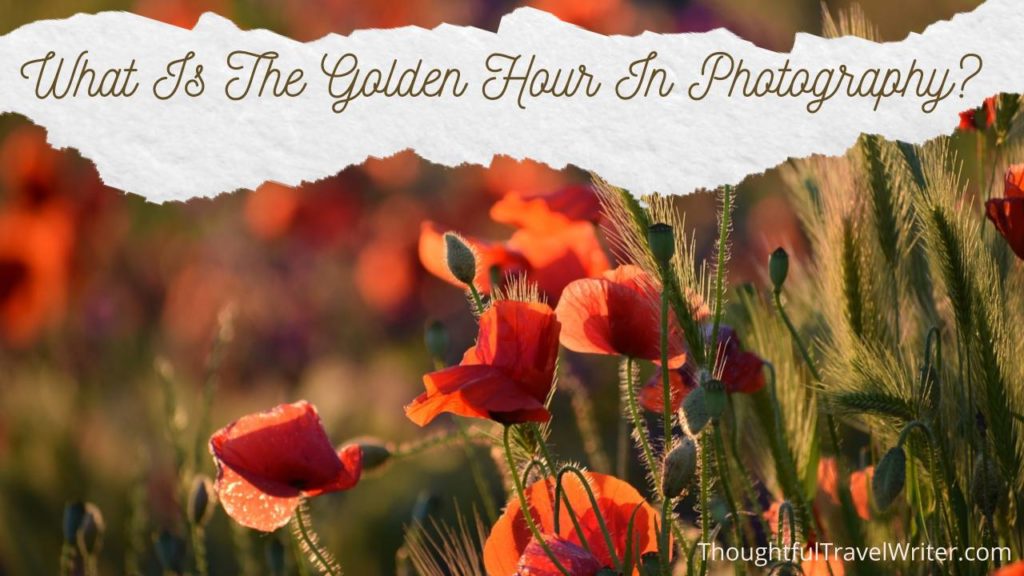
You may select from a variety of various lighting options here. The benefit of shooting during the golden hour is that you may experiment with different types of lighting in one place. A golden hour allows you to snap photographs with front lighting. This is due to the fact that the light is soft enough for the models to face the sun, which is the major light source for the shoot.
Have you ever wondered how photographers achieve such gorgeous golden tones in their photographs? The trick to capturing these sorts of photos is to photograph during the golden hour. Composition and lighting are two of the most important aspects of photography. We’ve all heard that excellent lighting is essential for taking great images. Flash photography allows you to manipulate the lighting conditions in your interior photography by employing artificial light, your camera’s flash, and even reflectors. Outdoor illumination, on the other hand, cannot be regulated, so you must make due with what nature provides.
There are four forms of lighting to deal with during the golden hour: backlighting, frontlighting, rim lighting, and flare. Backlighting: Backlighting is accomplished when your subject poses with their back to the sun and has a hazy effect. Is your subject overly dark? Experiment with raising the exposure or filling your subject with a reflector. Frontlighting is the polar opposite of backlighting and occurs when your subject faces the sun. This is the lighting that gives photographs such a lovely warm and flattering tone. All you have to do is make sure the sun is behind you!
Having fun is the greatest way to make the most of any picture opportunity. The golden hour provides the ideal environment for photographers to experiment with various forms of lighting and obtain effects that would be impossible to attain under any other settings. Here are some innovative photography ideas to attempt for your next magic hour picture shoot:
What is the golden hour in photography & how to take pictures during it.
It is simpler to film during the golden hour since it has a soft, warm, directed light to the north and east. Everyone enjoys shooting photographs during the golden hours because it is easier and less scary. Because the sun is lower in the sky at that time, golden hour appears more pensive.
The golden hour in photography refers to the period immediately following dawn and just before dusk. The sunshine is redder and softer during these hours than it is during the midday when the sun is straight overhead. This crimson, warm light is incredibly flattering, making the golden hour an excellent time for photography. Colors are more contrasty and shadows are longer. To take advantage of this lovely light, many photographers plan client sessions during the golden hour.
This illumination happens twice a day, when the sun is low in the sky and near to the horizon. Both in the 1-2 hours following dawn and in the 1-2 hours preceding sundown. Portrait photography is most commonly done in the evening, especially during the summer. Waking up early to get complete hair and makeup done before travelling to a photo site isn’t for everyone, and it may necessitate a coffee break along the route. However, if a morning session works better for your schedule, it might be an excellent choice. Not to add that in heavily populated areas right after daybreak, there will be less people in the backdrop of your photographs.
The term “golden hour” is used in photography. We photographers enjoy taking images at this time of day. However, in the end. What is the definition of golden hour? Today, we will provide you with further information on this subject!
What is golden hour?
Introduction Despite a scarcity of data to support its validity, the idea of the “golden hour” has been a time-honored pillar of prehospital trauma care. Non-compressible thoracic haemorrhage has been shown to be a leading cause of death in both military and civilian contexts. We wanted to know how prehospital time and torso injury severity affected survival. Furthermore, we expected that time would be a significant predictor of mortality in patients with higher abbreviated injury scale (ais) grades of torso injury (ais 4) and field hypotension (prehospital sbp 110 mmhg), as both injuries are frequently accompanied with bleeding. The data for this analysis came from a registry of 2,523,394 wounded individuals who were put into the national trauma data bank research data set between 2012 and 2014.
Many beginning photography articles state that the only good periods to photograph are during the golden hour (and occasionally the blue hour), which occurs before and after dawn and sunset. Writers would even go so far as to state that they keep their cameras away in the afternoon when the light is the worst. Then, as you advance in your photography career, you realise that you don’t have to hide your camera away like a recluse simply because the sun has risen. Any time is a terrific time to shoot, but my favourite time is around the golden hour (harsh light is also a favourite because of the shadows it creates).
The golden hour, despite its name, does not last exactly one hour. In general, you should arrive at your place before it begins and depart after it concludes. But when will that be?
It’s all about the light.
The golden hours are the first hour after dawn and the last hour before dusk (approximately). However, the duration of the golden hours varies based on your geographical location and the season. What is it about this lighting setup that makes it so ideal for photography?
The position of the sun in the sky Because the sun is at such a low angle, sunlight passes through more of the Earth’s atmosphere before hitting your subject. This results in mellow, diffused light that is pleasing.
What exactly is the “golden hour”? One of my greatest aspects of being a photographer is being able to capture these incredible, mystical photographs of my clients during a stunning sunset. The photographs are almost like something out of a fairy tale, with flawless luminous skin, soft shadows, and attractive highlights. Many things contribute to the creation of a magnificent collection of photos for my clients. As a professional photographer, I am well aware that light is the single most crucial factor in my photography. Photography is the art of capturing reflected light. I know that the better my lighting is, the better my photographs will be.
Here’s how to make the most of the soft natural light and warm colour temperature that occurs soon after sunrise and before dusk.
When is the ideal time to photograph? That’s a difficult topic to answer, but the golden hour, when the sun’s light is gentle yet warm and casts lengthy shadows, is a strong contender.
Tips for golden hour photography.
Here are eight prominent examples of golden hour photography, as well as some golden hour photography strategies for achieving them.
There are several advantages to shooting during the golden hour. Long shadows may be used to emphasise textures and be creative. Try some backlight photography or play around with silhouettes. You’ll also get to see some lovely warm hues. Simply bring your camera and get ready to capture the golden rays of sunrise and sunset!
Are you interested in learning how to frame your photographs to take advantage of the golden hour? Take a look at some pointers on using the golden ratio to frame your photographs without resorting to heavy math. You should also look at these stunning sunset photographs for ideas!
In photography, golden hour holds a unique position. If you shoot landscapes, portraits, or even weddings, you know how lovely that golden light can be. However, we seldom hear street photographers discussing the importance of street photography during golden hours. In this movie, photographer Frederik Trovatten goes out early in the morning, just before sunrise, to practise street photography. He also gives some advice on how to shoot people on the street during golden hour. Let’s see how things go:
Taking your reflector is one of the most popular golden hour photography recommendations. You could definitely use one for photographing portraits in this type of light. Because natural light is already warm, employ its white or silver side. You may play about with placement by lifting the reflector over your head and casting downward shadows. If you use an orange gel, the light from the flash will blend in with the natural one.
Do more with Adobe Photoshop Lightroom.
Adobe Lightroom and Photoshop post-processing tools bring up a world of options for modifying your golden hour images. If you’re having difficulties keeping your highlights from blowing out, you may edit to get the effects you couldn’t attain during the shot. “Consider how you want the image to turn out. This will have an effect on what you do in post-processing.”
What is Golden Hour? Tips to Use it In Your Photography
You may improve the quality of any shot by shooting during the golden hour. Follow these golden hour photography ideas to put yourself up for success. Planning is essential for golden hour photography. You must be aware of the exact dawn or sunset times for your area. For the best results, use a golden hour calculator to determine the ideal golden hour shooting window. Arrive early in order to prepare for your picture shoot. Keep an eye on the clouds, weather, and scenery so that you can take advantage of the fast changing photography circumstances during golden hour.
How to take photos during golden hour (+ editing tips)
The first hour before sunrise and the last hour of light before dusk are known as golden hours. It’s a lovely time when the sun is low above the horizon and emits warm, soft, and directed beams. Golden hour, often known as magic hour, is the finest time of day to take excellent outdoor photography. Longer shadows are formed by low-angle lighting, providing drama and complexity to situations while bathing everything in gorgeous golden light
Most experienced photographers think that the early and late hours of the day are some of the greatest periods to photograph. If you want to take the greatest images possible, with the warmest, richest, and most spectacular light, you must be aware of the golden hour. This article will go over all you need to know about golden hour photography. Everything from how to capture golden hour selfies to the finest golden hour recommendations is right here! Let’s get started.
Phototime: blue & golden hour is an award-winning, ad-free sun tracker app. Phototime golden hour, on the other hand, is more than simply a magic hour calculator. If you are a sun seeker or a sun surveyor, you will like our new map module and ar view. Plan your photographic excursion and seek for the greatest possible light! Our modules, which include a weather prediction, reminders and a sun tracker, a moon phase calculator, and tips and techniques, are a genuine medicine for your picture game. You’re unsure of what camera settings to use or when to shoot? Try our free photo pills to get rid of your photography problem.
What Time is Golden Hour?
It’s golden hour. That notorious magical “hour” of the day when the light takes on an unique golden tint and all of your images miraculously alter. Softer light, warmer tones, and lens flares are possible. It is undeniably the most popular time of day for most photographers to shoot. But, exactly, what is the golden hour photography? And how can we make the most of golden hour to take amazing photos?
Surprisingly, at this time of day, we prefer to visualise those beautiful red-orange sky on the horizon. However, in order to really appreciate the wonders of golden hour illumination, you must turn around. While sunrises and sunsets are spectacular, the real beauty occurs when you look in the opposite way. Skin tones warm up. The scenery takes on a lovely, mellow radiance. Structures reflect reddish light in crimson to gold tones. Reflections appear more vibrant. Depending on the light and the scene, the effects might be subtle or dramatic.
The golden hour, eh? Are you asking what is the golden hour in photography? It’s that lovely time of day when warm, brilliant colours light up the surroundings, creating for excellent Iceland photos. The low angle of the sun, casting a gently diffused light over the foreboding environment, brings to life vast, desolate volcanic plains and undulating rhyolite mountains. The golden hour is without a doubt the ideal period for landscape photography in Iceland. The images you may take during these times convey a mood that is nearly hard to replicate at any other time of day.
In this case, how much time elapses between dawn and sunrise? The length of the twilight period (the time between astronomical dawn and sunrise) varies substantially depending on the observer’s latitude, ranging from a little more than 70 minutes in the equator to many hours in the polar regions. When is the ideal time of day to take photos? Professional photographers swear by the “golden hour,” which lasts approximately an hour after sunrise and an hour before sunset when the sun is low in the sky and provides soft, diffused light.
What Is So Special about Golden Hour?
In photography, golden hour refers to the art of catching the sun’s rays at the precise time when the light and shadows are just right. This technique is widely used to capture stunning images during sunrise, sunset, and other important occasions. The golden hour is a period of day right before sunset when the light is the most golden, warm, and romantic. Many photographers use this golden hour to capture a mood or feeling.
Thank you for sticking with me for a blog article about golden hour photography. Check out my just a tip page for information on engagement photographs, timelines, special events, and more! I’ve learnt a thing or two about weddings in my seven years as a knoxville wedding photographer. If you want me to be there for you on your wedding day, please contact me at any moment!
It’s the time of day when the sky and atmosphere are warm and golden, about 1-2 hours after sunrise and before sunset. Photographers adore it because it provides a warm and glowy appearance to their images, and when used as a backlight, it creates gorgeous bokeh. Because the sun is low on the horizon and so dispersed by the sky, it gently wraps around their subjects. You may use it to produce extremely atmospheric landscape and nature shots, especially since it’s the time of day when the sky has great colour. That’s the best way to describe what is the golden hour in photography.
The golden hour is a time of day in photography that occurs just after dawn or before sunset when the light is redder and softer than when the sun is higher in the sky. The golden hour is also known as the “magic hour,” especially among cinematographers.
Is the Golden Hour Every day?
Have you missed the golden hour? Don’t worry, it happens twice a day!
Even though you missed the dawn and sunset, the enchantment lives on. When the sun sets in the evening, the “golden hour” is followed by the “blue hour.” So, if you wait long enough, you might be able to catch the cool notes of blue light that wash over the surroundings before darkness. On that topic, some people love combining two images of the same area taken in two distinct lighting conditions.
Take your photograph at golden hour. You may get that warm glow by taking your photo a few hours before sunset, sometimes known as the golden hour. There are applications that can tell you when this happens on a certain day, but typically, 4 to 5 p. M. is the optimal time.
This small period of time, which occurs twice every 24 hours, has highly distinct characteristics. To begin with, it’s really soft, which means your subjects will appear more appealing than before. This is due to natural light traversing a greater portion of the planet’s atmosphere. During the golden hour, your subjects will be able to face the sun without having to squint!
When the sun is directly overhead, light passes through our thin atmosphere with little hindrance. That’s the answer to what is the golden hour in photography. However, when the sun is on the horizon, the light must travel through several miles of dense lower air before reaching our sight. Blue light is dispersed as a result, leaving behind yellow and orange. The light is also partially diffused as it travels through the atmosphere. Examine a shadow in the middle of the day. It is unique and crisp. When the sun is on the horizon, look for a shadow. The shadow line is softer, and some ambient light enters the shadow region, making it less gloomy.
Golden Hour vs. Blue Hour
When the sun sets, the light does not completely go away. At midnight, blue hour is immediately followed by golden hour. Like you may have seen, the colours get colder and bluer in here, as they did in the previous colour. Similarly, just as golden hour occurs in the morning, blue hour occurs in the morning as well.
The sun lies below the horizon during blue hour, and its light is dispersed in the upper atmosphere. With no one direct light source, this results in highly uniform lighting. The light is much more soft and diffused at this time of day than it is during golden hour. The sunlight is so gentle that there are virtually no shadows. The term “blue hour” refers to the vivid blue hue of the sky during this time of day. Because the sky is being lighted by the sun concealed below the horizon, it is much brighter than the countryside.
What is the golden hour in photography? Professional photographers capture the last hour before sunset and the first hour after daybreak. These hours, known as “the golden hour” or “magic hour,” give the ideal light for taking spectacular photographs. Similarly, where is the sun now? The sun is presently in the Capricorn constellation. What exactly is blue hour photography? What exactly is the blue hour? The so-called ‘blue hour’ is the time after sunset, around nightfall, when the sky takes on inky, indigo colours before becoming impenetrably dark. It’s a one-of-a-kind time of day that can’t be replicated even with the finest picture editing programmes.
Avoid utilising your landscape preset if your camera supports scene modes or photo styles. The names of these settings differ by manufacturer, but the landscape mode on your camera will increase the saturation of blues and greens in a picture while decreasing the saturation of orange colours. So, while your impulse may be to use the landscape mode since you’re photographing a landscape, it’s not the greatest choice for golden hour photographs.
When asked when the optimum time to shoot is, most photographers would reply the golden hour because of the quality of light it provides. Asking what is the golden hour in photography is a logical next step for budding photographers.
The golden hour is the period of time between dawn and sunset when the light is gentle and everything has a golden colour. Because the sun is low on the horizon, the shadows are lengthy and gentle.
So far, all I’ve done is supply you with a wealth of useful information regarding what isthe golden hour in photography. However, I have yet to provide you with any ideas and tactics for utilising this specific time of day in each genre of photography. Why should you go out so early (or so late) to snap photos? Why can’t you just use filters or other techniques to photograph in strong sunlight? Let’s be honest: is it worth it in practise to go shooting during golden hour?
Because portraits and landscapes benefit the most from this unusual light, we’ll divide the advice into those two categories. As with most photography tips and methods, after you’ve mastered them, you can apply them to less obvious circumstances — for example, portraiture advice may be used to landscapes and the like. However, no matter what you’re filming, one guideline is as timeless as the hour.
All I’ve done up to this point is offer you a lot of wonderful facts about the golden hour, but very few (almost none) tips and tactics about how to exploit this specific time of day in each individual photography genre; why should you come out so early (or incredibly late) to take photos? Why can’t you just use filters or some other techniques and shoot in direct sunlight? Let’s be honest: is it worth it in practise to go shooting during golden hour?
Now that you know what is the golden hour in photography you should be able to answer that with a resounding yes!
Thanks for reading what is the golden hour in photography. Be sure and check back for more photo journal tips.


